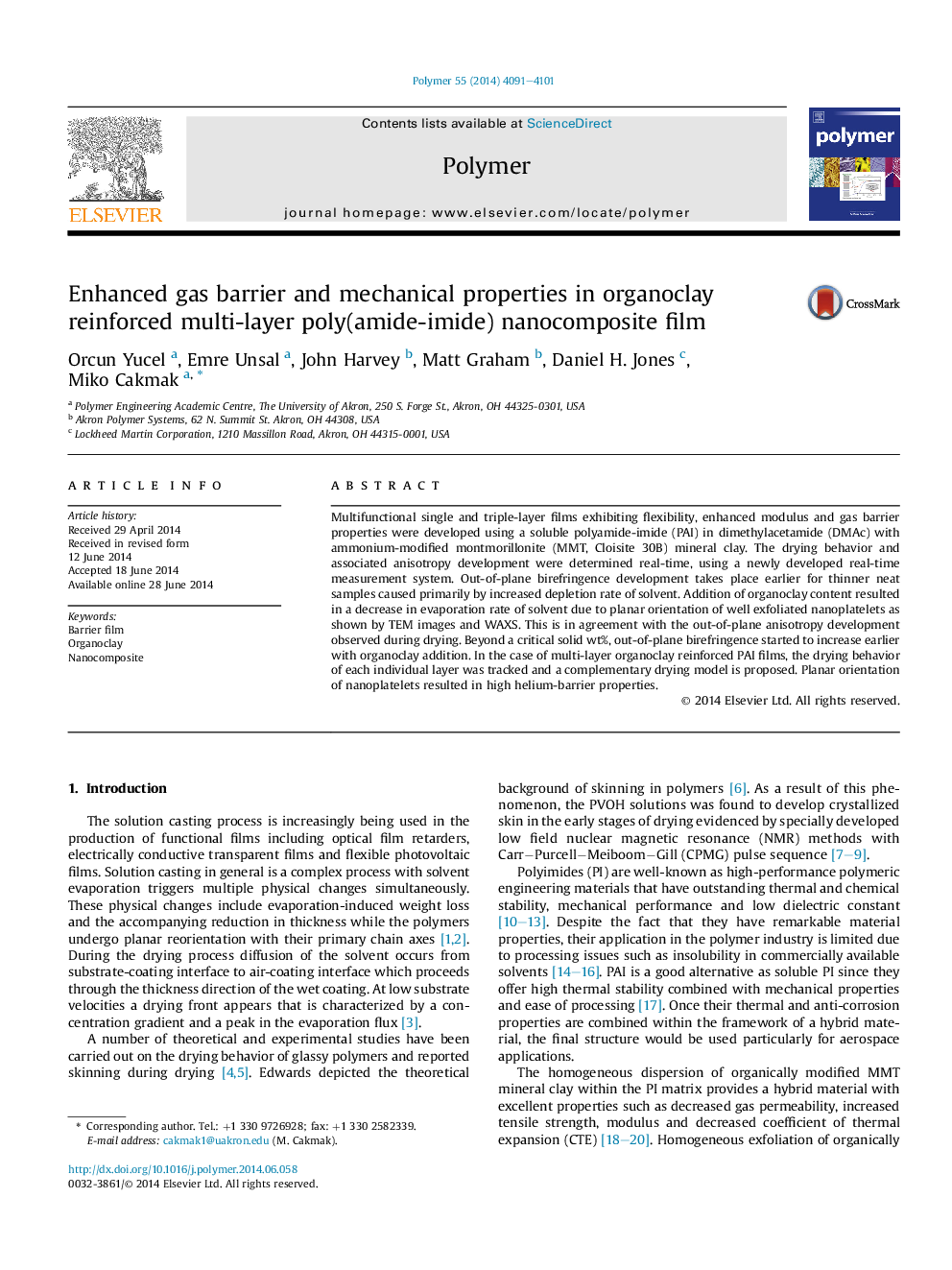| Article ID | Journal | Published Year | Pages | File Type |
|---|---|---|---|---|
| 5181219 | Polymer | 2014 | 11 Pages |
â¢Developed multi-layer films showed enhanced gas-barrier properties and flexibility.â¢Organoclay content increased out-of-plane birefringence values.â¢Shear viscosity & stress increased with organoclay loading at low shear rates.â¢Crossover behavior was observed in rheological behavior as the clay concentration increased at critical shear rate of 0.35 sâ1.â¢Permeability values decreased over 50% in comparison with the neat PAI films.
Multifunctional single and triple-layer films exhibiting flexibility, enhanced modulus and gas barrier properties were developed using a soluble polyamide-imide (PAI) in dimethylacetamide (DMAc) with ammonium-modified montmorillonite (MMT, Cloisite 30B) mineral clay. The drying behavior and associated anisotropy development were determined real-time, using a newly developed real-time measurement system. Out-of-plane birefringence development takes place earlier for thinner neat samples caused primarily by increased depletion rate of solvent. Addition of organoclay content resulted in a decrease in evaporation rate of solvent due to planar orientation of well exfoliated nanoplatelets as shown by TEM images and WAXS. This is in agreement with the out-of-plane anisotropy development observed during drying. Beyond a critical solid wt%, out-of-plane birefringence started to increase earlier with organoclay addition. In the case of multi-layer organoclay reinforced PAI films, the drying behavior of each individual layer was tracked and a complementary drying model is proposed. Planar orientation of nanoplatelets resulted in high helium-barrier properties.
Graphical abstractDownload high-res image (334KB)Download full-size image
